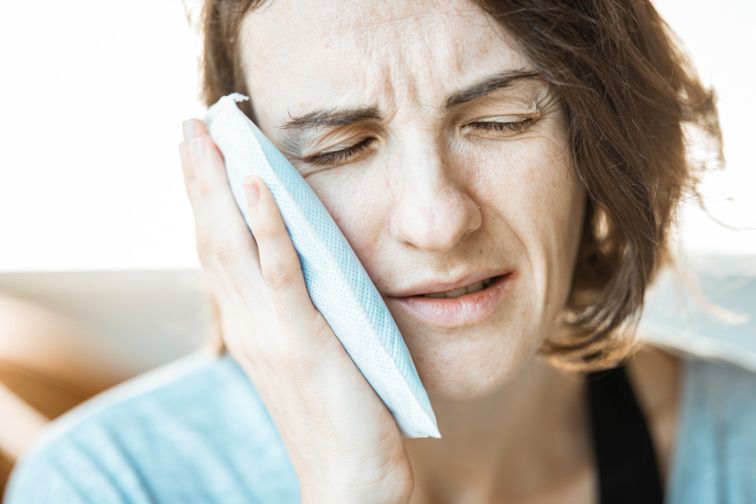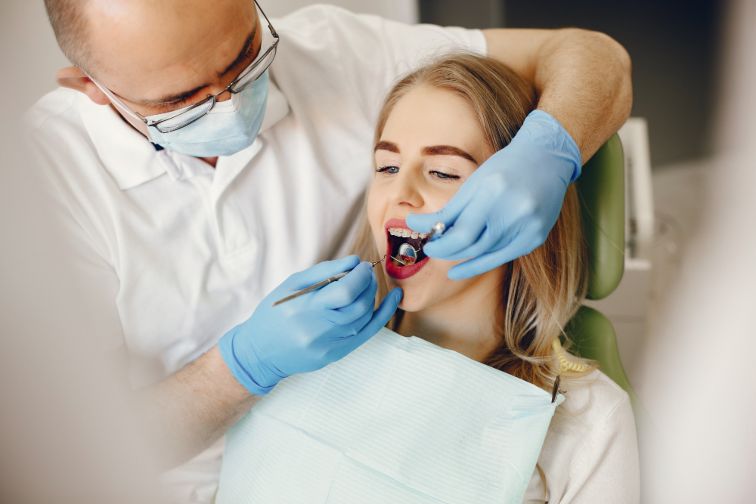The majority of people think that teeth are made of bone matter. They are right, of course, but bone is not the only matter inside the person’s tooth. The outer part of the tooth is made of bone, but the innermost part is much softer. This area is called the pulp and it’s usually most associated with tooth sensitivity.
The pulp is where the blood, supply, and nerves reside in the tooth. Then, what is pulpitis?
Simply put, pulpitis is a condition that causes painful inflammation of the pulp. It can occur in one or more teeth and it is usually caused by bacteria. The bacterial infection causes the pulp to swell and that’s when the pain occurs.
This is a rather painful dental condition that, if left untreated, can cause other health issues. Fortunately for the patients dealing with this condition, there are ways to prevent and treat pulpitis.

The first thing patients should know that there are two types of pulpitis - reversible and irreversible. Both of them cause pain, but the pain may vary. For example, the pain caused by reversible pulpitis is usually a bit milder and only occurs when a person is eating.
On the other hand, the pain caused by irreversible pulpitis is, in most cases, more severe and it is present during the day and night. Pain is just one of the pulpitis symptoms and signs. However, the key is to discover this condition before the pain occurs.
Therefore, what are the symptoms of pulpitis patients should know about? Here are the signs patients should look out for:
Some severe cases of pulpitis may include symptoms like:
If you notice any of these signs, make sure to contact your dentist as soon as possible.

When the tooth is healthy, the enamel and dentin layers are usually enough to protect the pulp from infection. However, if these protective layers get damaged, the bacteria can find their way into the pulp, causing infection and painful swelling. This is usually what causes pulpitis.
If this happens, the pulp remains trapped inside the tooth’s walls. Then, the swelling causes pressure and the person feels irritation or pain. It depends on the severity of the infection.
Considering that this is the only way a person can suffer from pulpitis, it’s extremely important to take good care of the teeth enamel and dentin layers.
Here are a few things that can damage the said protective layers:
As mentioned before, there are two types of pulpitis - reversible and irreversible. Some dentists also use terms like acute and chronic when describing these two conditions. Therefore, what is the difference between acute and chronic pulpitis?
Reversible pulpitis typically causes mild inflammation in the pulp. Also, the pain is quite bearable and it usually lasts for a short period of time.
In most cases, if a patient has reversible pulpitis, a small cavity is usually the culprit. Fortunately, harmful bacteria can’t find their way into the pulp when the cavity is small. Therefore, if the cavity is detected in time, a simple procedure can fix the issue.
There are, of course, some nuisances caused by this mild condition. For example, eating sweet or cold food may cause sharp pain, but the good thing is that the pain goes away once the stimulant is gone.
The tooth pulp is usually healthy and, with timely and proper tooth treatment, it is possible to save the tooth.
Unfortunately, irreversible pulpitis is one of the main reasons people seek emergency dental treatment. Irreversible pulpitis occurs when bacteria infect the nerve, and there is a painful inflammation of the pulp.
In most cases, this type of pulpitis causes severe pain. This pain can be spontaneous, lingering, and radiating. In some cases, the pain can be so horrible that it wakes a person up in the middle of the night.
This dental condition can lead to an infection at the end of the tooth. This occurs when the bacteria in the pulp cause the nerve to die. Dentists refer to this as pulp necrosis or pulp death. Yes, it can be as nasty as it sounds.
In case of necrosis, a pocket of pus usually forms at the end of the tooth’s root. This is the main reason people with irreversible pulpitis feel severe pain, especially when eating.
If a patient doesn’t treat this condition, the infection can spread to other parts of the body. Worst case scenario - it could infect the brain.

Unfortunately, there aren’t too many pulpitis remedies a patient can apply themselves. In most cases, the only solution is a dental procedure. However, treatments can vary depending on the type of pulpitis.
Patients who have reversible pulpitis may treat the cause of the inflammation. This means if they have a cavity, they should just remove the decayed area and restore it with a filling. In most cases, this will be enough to fix the issue.
If, however, the patient has irreversible pulpitis, their tooth may be saved through pulpectomy. During this procedure, the dentist removes the pulp, but leaves the rest of the tooth intact. After they remove the pulp, they disinfect, fill, and seal the hollow area.
However, if the tooth is dead and can’t be saved, the dentist has no choice but to extract it.
Patients who experience these symptoms after treatment should consult their dentist as soon as possible:
Pulpitis is a nasty dental condition, but it can easily be avoided. In order to do so, a person has to practice good oral hygiene (flossing and detailed brushing) and visit a dentist on a regular basis. Also, reducing sweets like soft drinks, cake, and candy can help with the prevention of pulpitis.

